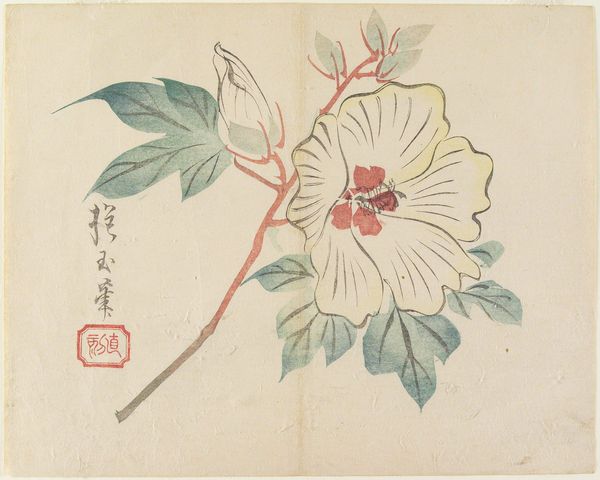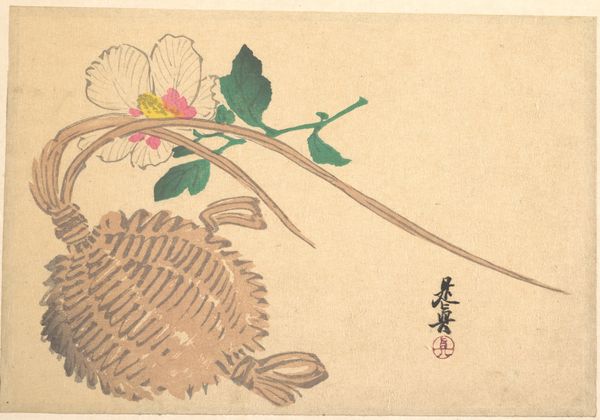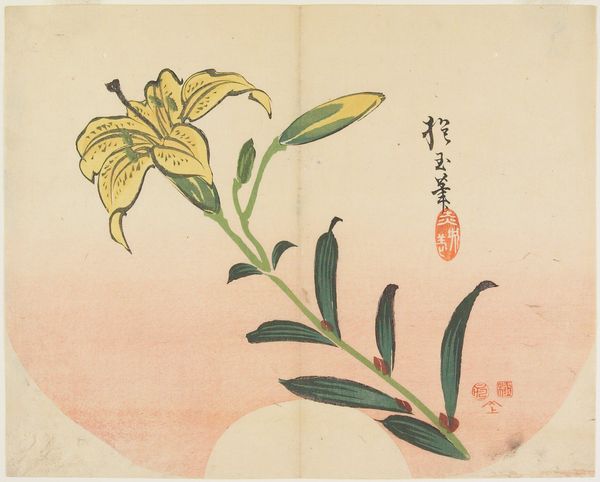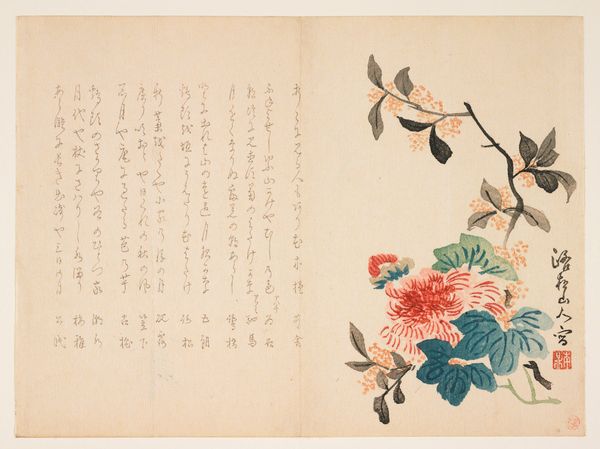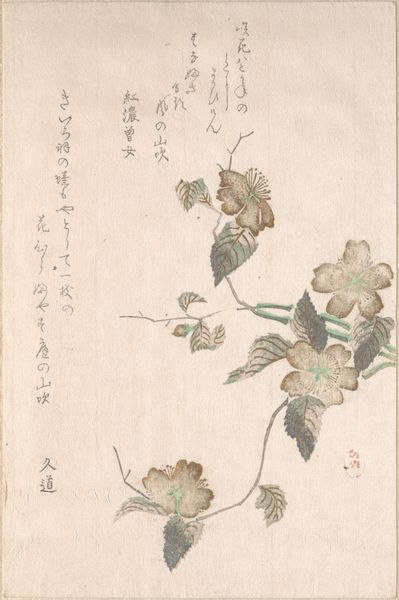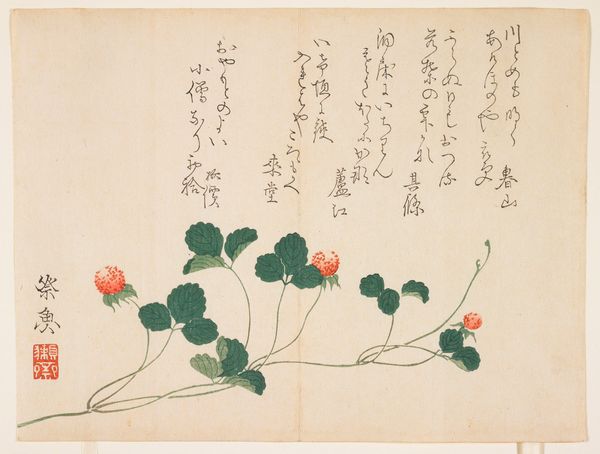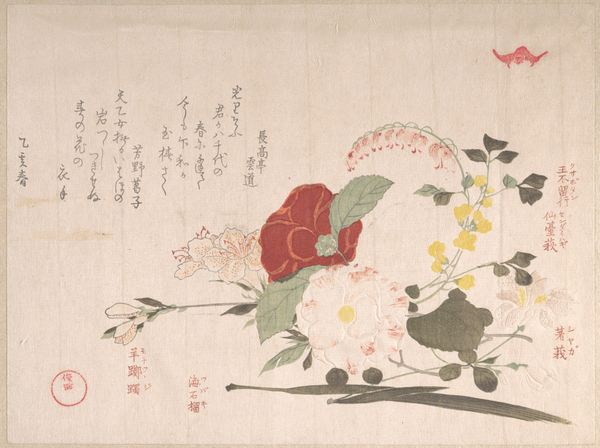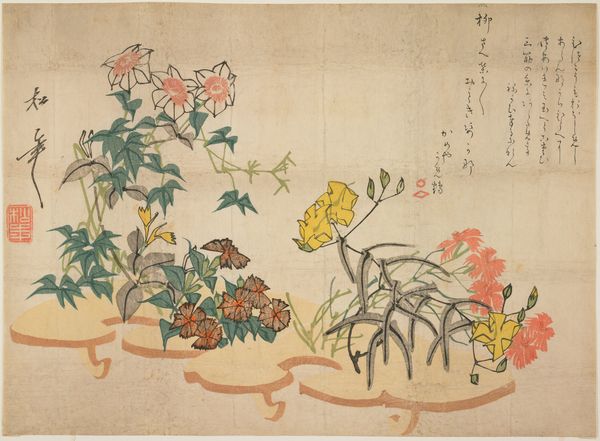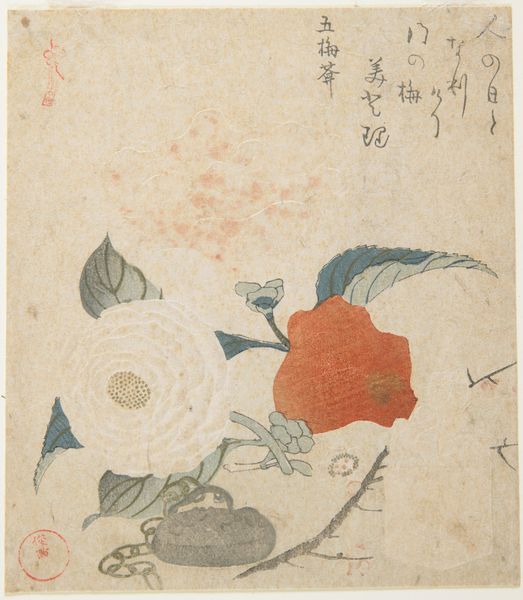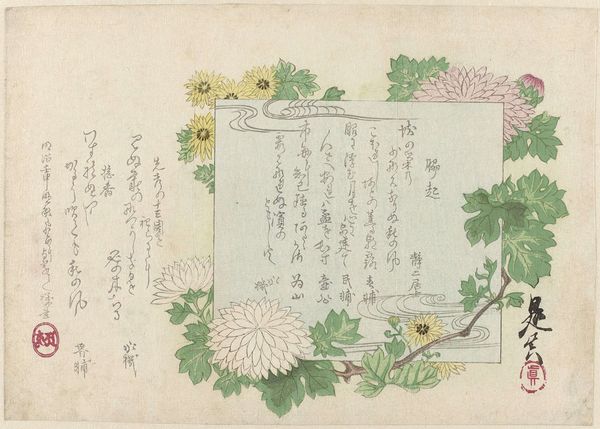
painting, print, watercolor, ink
#
painting
# print
#
asian-art
#
landscape
#
ukiyo-e
#
japan
#
watercolor
#
ink
#
watercolor
Dimensions: 9 1/8 × 11 7/16 in. (23.2 × 29.1 cm) (image, sheet, uchiwa-e)
Copyright: Public Domain
Curator: What a delicate, almost ethereal image. Editor: It is striking. So simple, and yet the flower almost floats against that pastel background. I'm curious to know more. Curator: The Minneapolis Institute of Art holds this print titled *White Camellia*, crafted around the 1830s by Yamada Hōgyoku. It utilizes watercolor and ink; notice how skillfully these media are employed. Editor: Absolutely. The ink work gives the stem a wiry quality that really contrasts with the softness of the flower. This spare aesthetic—a camellia rendered against such a vast, undifferentiated field of pink—seems so intentional. Curator: Floral imagery like this in Ukiyo-e, holds layered meanings. The Camellia, especially a pristine white one, symbolizes purity, longevity, and devotion. However, the Camellia is also fraught: its flower falls all at once, abruptly, thus evoking the ephemeral nature of life itself. Editor: So there's a duality at play? Life and beauty alongside impermanence and even a hint of mortality? I find it reinforced by how the composition is cut by what seems to be an oval: a traditional hand-fan shape. It focuses and frames what we see, giving it the status of a moment. Curator: Exactly! It distills the image, and, further, its visual and contextual position resonates within a rich tradition of similar floral studies that captured the Neo-Confucian values prized by Japan’s literati: visual arts intertwined with nature, the seasons, literature, poetry, philosophy. Editor: Knowing about those traditional associations certainly adds another dimension to my viewing experience, thank you. It initially felt purely aesthetic, this delicate juxtaposition of color and line; but it also works as a symbolic carrier. Curator: It’s often in the interplay between those elements—aesthetic presentation and symbolic resonance—that these works find their true power. Editor: I completely agree. Examining these works invites us to really consider the cultural forces they navigate and represent, as it's both immediate and full of echoes of the past.
Comments
No comments
Be the first to comment and join the conversation on the ultimate creative platform.
